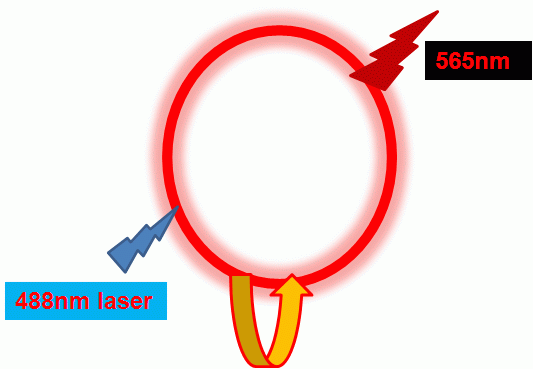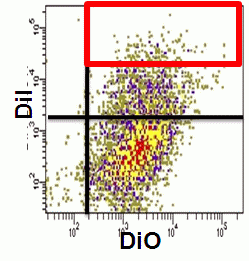DiO-DiI FRET Analysis
Lipophilic carbocyanine dyes DiO and DiI have been used in flow cytometry for labelling for decades. DiO is excited at 484nm and emits at 501nm, while DiI is maximally excited at 549nm can be excited at 488nm and emits at 565nm. Thus DiO & DiI can be collected in the FITC and PE channels of flow cytometers. The phenomena of FRET can used to detect the efficiency of the production of hybridoma cells flow cytometrically as the emission peak of DiO (Donor) overlaps with the excitation peak of DiI (Acceptor) thus allowing FRET to occur.
The cells to be fused are labelled with DiO (Donor) or DiI (Acceptor) and in the presence of PEG (polyethylene glycol) cells fuse giving a double positive population. The compensation is set using the two cell populations labelled with DiO or DiI and unlabelled cells. Median fluorescence values for the single positive populations for DiO and DiI can thus be determined as well as background values for DiO and DiI. These values are required for the calculation of FRET, see calculation procedure for double labelled cells and hybridomas.
FRET occurs when there is a transfer of energy from Donor to Acceptor resulting in an increase of Donor fluorescence. Thus if FRET occurs the median fluorescence of the Acceptor DiI will increase above that of the DiI single colour control; whilst the median fluorescence of DiO will decrease below the DiO single colour control. A positive FRET control (25% efficient) for the detection of hybridoma cells can be generated by double labelling the same cells with DiO & DiI, this can be seen in figure.
Hybridoma cells give quite a different profile in DiO & DiI fluorescence to double labelled cells, but had a enhanced FRET efficiency above that of the positive double labelled control at 37%, see figure.


